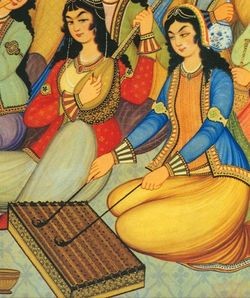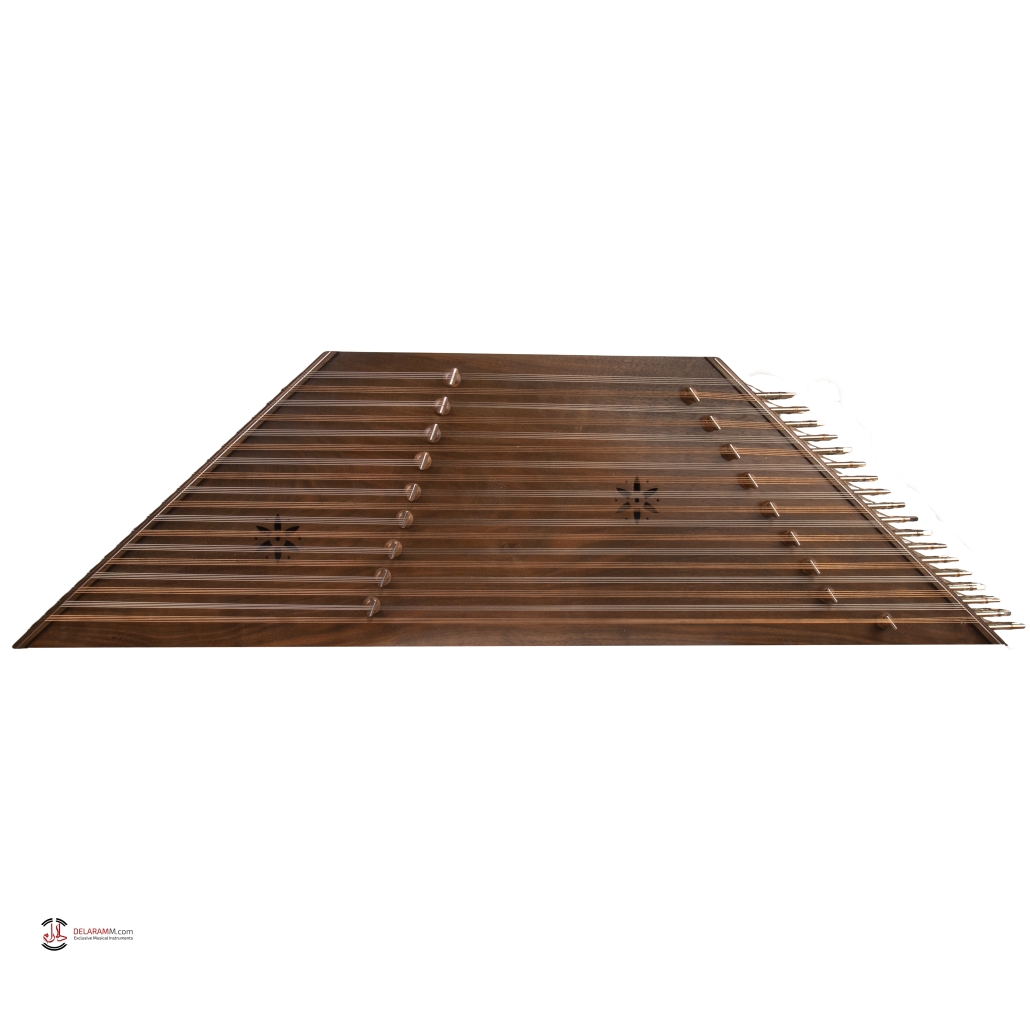The Santoor: A Journey Through History
What country is Santoor from?
The presence of some similar instruments to Santoor all over the world makes it hard to identify the exact origin of it. According to Gifford (2001), Santur was first played by women in Iran before appearing in other countries such as Turkey and India. As we can see in the first written records, Santoor appeared in Persian history texts and poetry around the 10th century. Based on the stone carvings from Assyrians and Babylonians, the first signs of Santoor origin come from Iran. The findings show that Santur was played while hanging from the player’s neck.
According to Historians, the Iranian Santoor was the ancestor of the Harp, Yangqin, Harpsichord, Qanun, Cimbalom, and Hammered Dulcimers. There are several theories about the origin of Santur but it is mostly believed that the Iranian instrument is the predecessor to similar types. As a traditional instrument, it has a lifetime history in Iran since centuries ago. This article tries to give some information about this old Iranian musical instrument, its features, and the best players of it.
What is a Santoor?
Santoor is an instrument with approximately 72 to 100 strings and a wooden board made of different types of woods such as walnut. All types of this instrument have two bridges on the left and right sides of the soundboard called ‘Kharak’ where the strings stretch. The Most common type has nine Kharak in each row that divides the instrument into four parts. Two flower-shaped holes on it play a major role in beautifying the sound.
Each Santoor needs a tuning tool and a set of “Mallets”. By having different types of Mallets you may have different sounds. The player holds the Mallets by thumb and the middle fingers. Like most other instruments, Santur also has some limitations for the player; however, the beautiful sound of the instrument absorbs everyone around. There are different techniques to play this instrument professionally. However, to play well you need to follow the below steps.
What are Santoor’s playing techniques?
Every musical instrument complies with a specific technique of playing which is considered as the general rule to play it. Santoor as a string instrument has its own rules and regulations to play. Although these are the basis, some professional players have gone one step beyond the rules and have created their style of playing. That is why we call them pros. Anyway, to get familiar with techniques, follow these steps.
- Learn to play with both hands
Just like the piano and some other musical instruments, you need to learn to play Santoor with both hands. It is the first prerequisite of playing it.
- A mixture of different methods
To produce various effects and tones, you should use both gliding and striking methods together.
- Pressure and finger position
To become a master in playing Santur is nothing that happens in a day. As a beginner, you have to pay precise attention to the position of your fingers and the pressure of the Mallets. It results in a control over the volume of the notes. However, keep in mind that too much pressure may cause an out-of-tone sound.
- Speed and pace
The pace of playing has an important and direct effect on the dynamic of your tones. However, such skills are gained by practice and experience. Once you can control your mallets correctly, you can come up with the speed of playing as well.
- Rhythmic patterns empower you more
If you want to improve yourself quickly, you should play rhythmic patterns as much as you can. These patterns help you to develop your coordination with the instrument. To play rhythmic patterns correctly, you should have precise control of your mallets while playing. Furthermore, you need to cope with the speed of playing to catch the correct sound and tone. That is why we believe that rhythmic patterns empower you more.
How does it sound?
Santoor is considered both a percussion and string instrument. In this case, it is similar to piano and chordophone because, like both of them, Santoor produces sound when the strings are struck with a hammer. The strings are struck with two wooden mallets called “Mezrab”, giving it a unique sound. While playing it, listeners reach a calm and meditative state that fills their souls with joy.
Santoor was commonly used as the background sound for Sufi music and very rarely for solo performances. With the efforts of professional players, devoting their life to mastering the playing techniques over time, Santoor has reached a level of sublimation no one can deny or ignore. If you are seeking joy alongside pleasure you may need to listen to such instruments especially played by those mastering the instrument’s techniques and harmonies.
The Best Players
The world’s largest competition for classical musicians is known as World’s Best Musicians. The goal of this competition is to identify the most outstanding players all around the world and also help them to improve their skills. Pejman Bolourchi is one of the famous Iranian Santoor players who received the first prize of WBM in the last few years. Such a result in an international event shows the sublimity of the Santur when it is played by a professional player.
Another famous figure in playing Santoor is the famous Parviz Meshkatian who is a maestro in this instrument. He was an Iranian icon, musician, composer, professor, and extraordinary player who held a specific style during the traditional Iranian music history. Unfortunately, he passed away in 2009. However, his remarkable works are played and he is still alive through his works.
Conclusion
In this article, we have tried to give as much information as possible about the origin of Santoor, its physical characteristics, different basic techniques, and the most famous contemporary Santoor players. However, if you are interested in learning more about this instrument and its special features, you can watch videos and read more articles about it. Although Santur seems easy to play, even controlling the mallets between your thumb and finger is truly a difficult technique.



